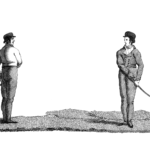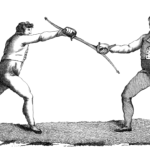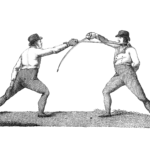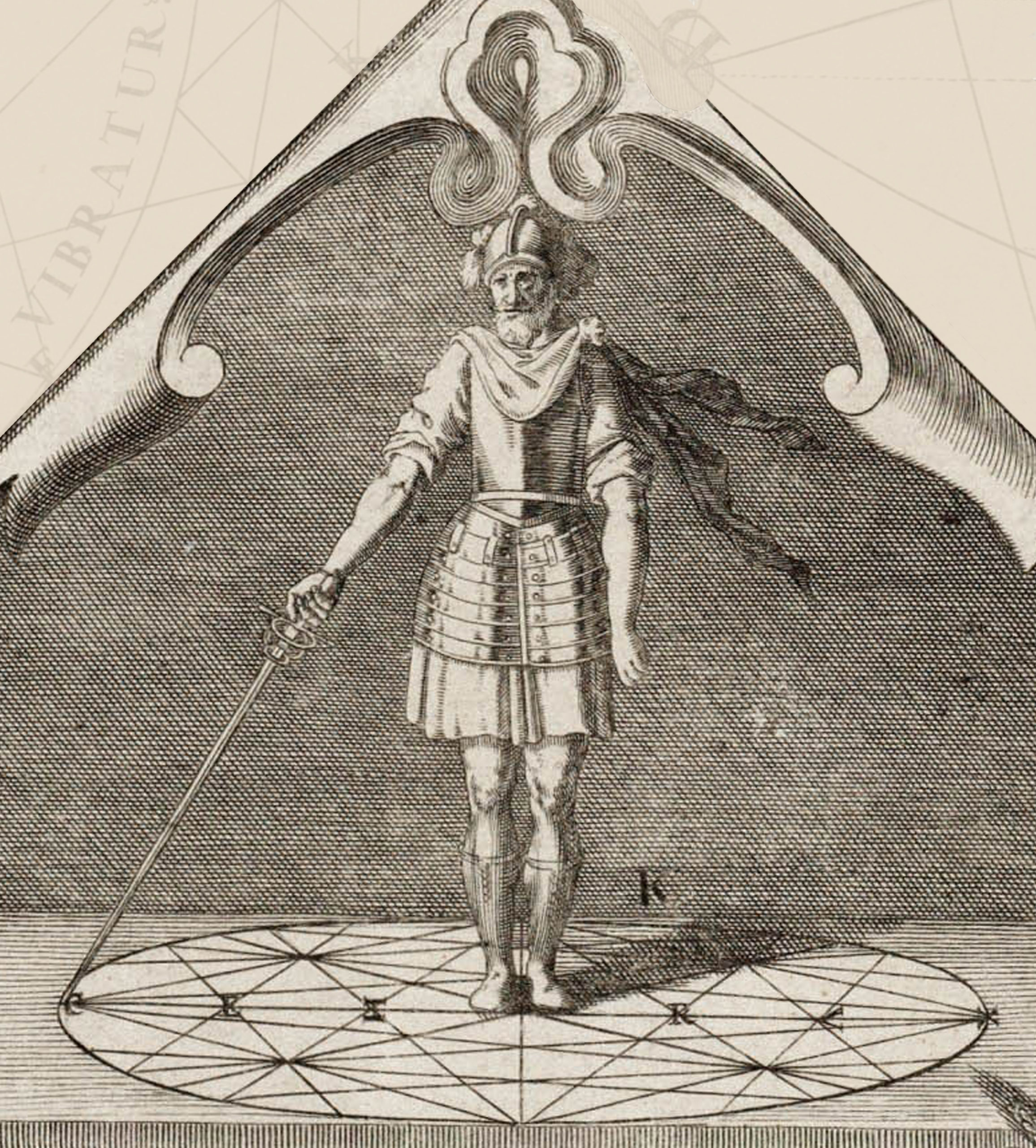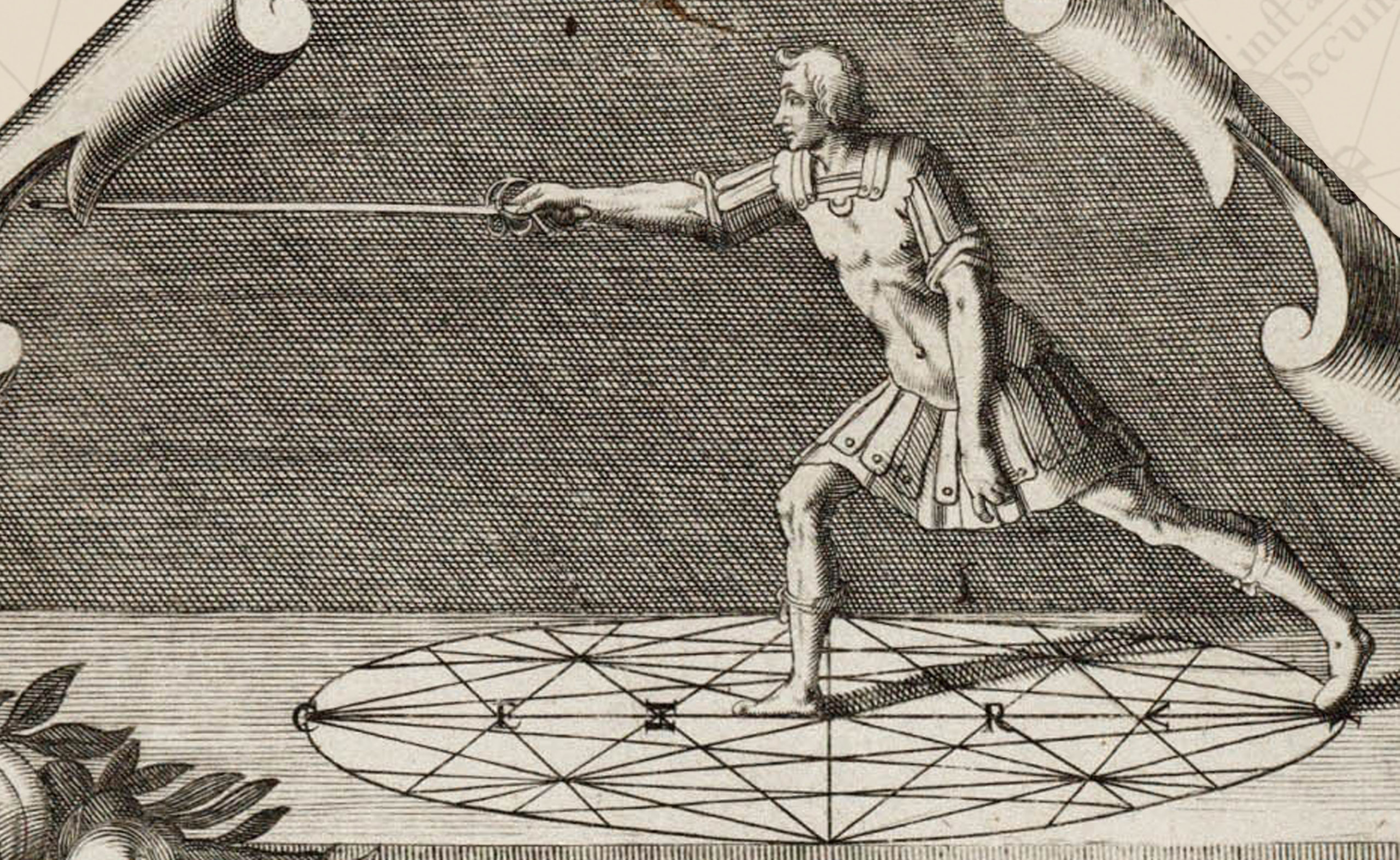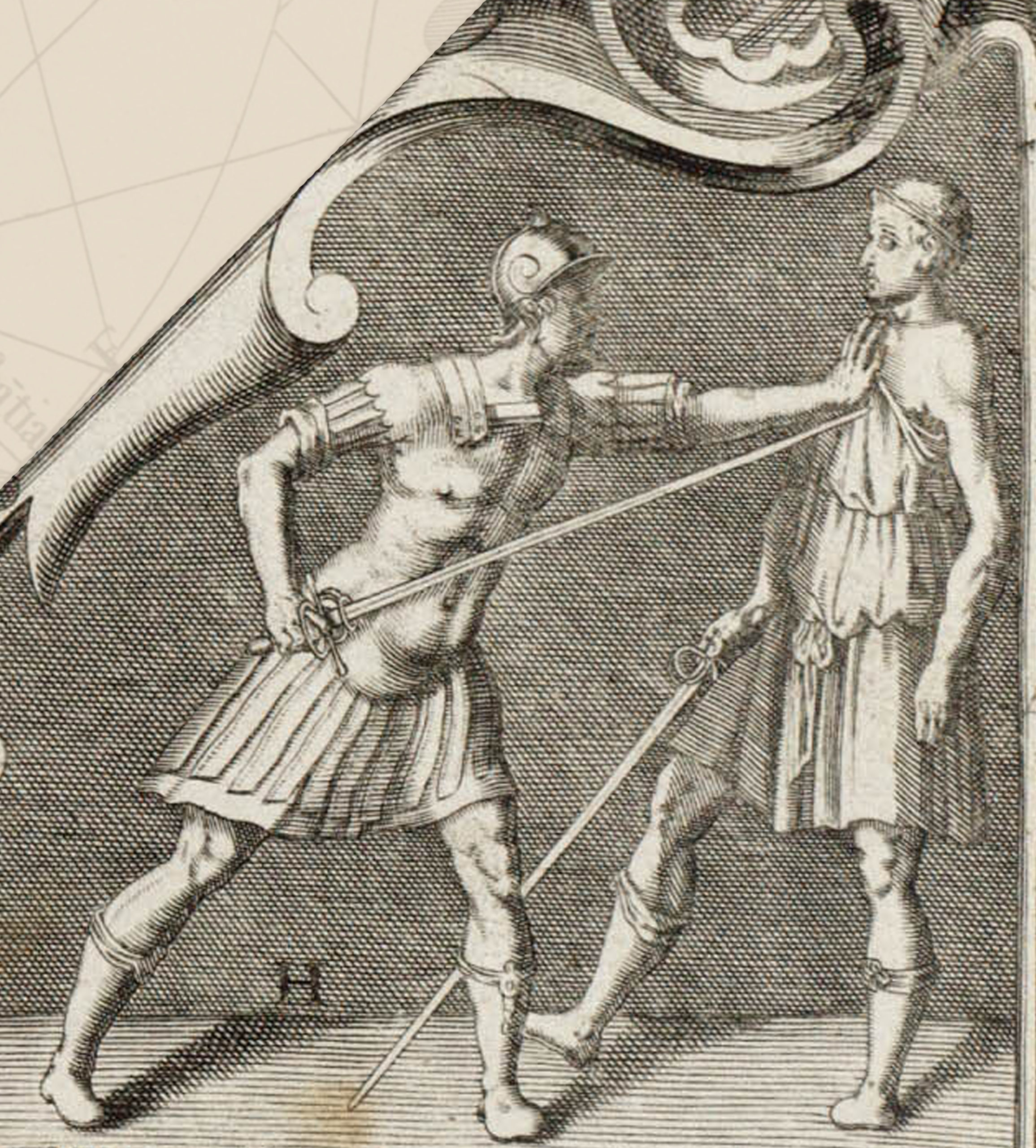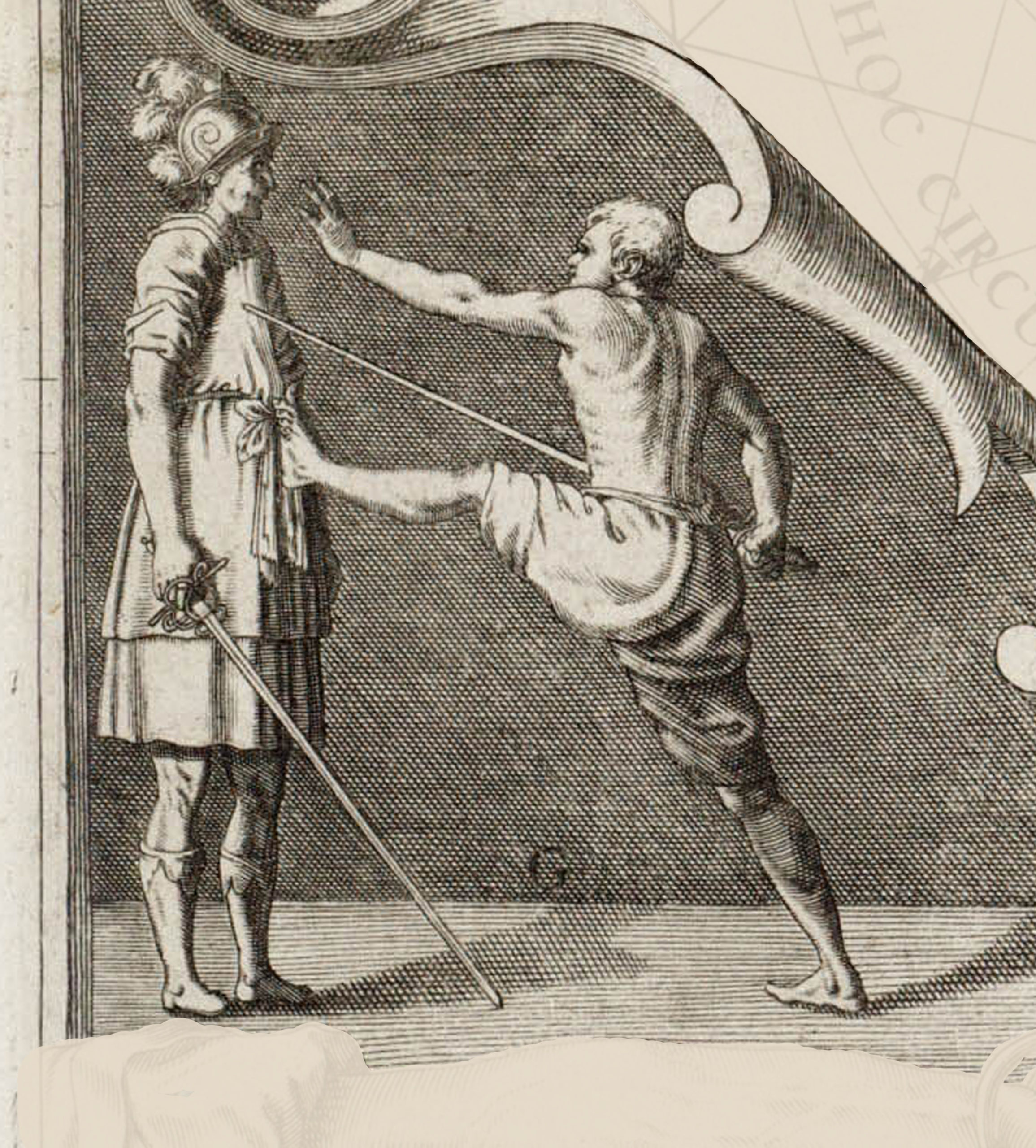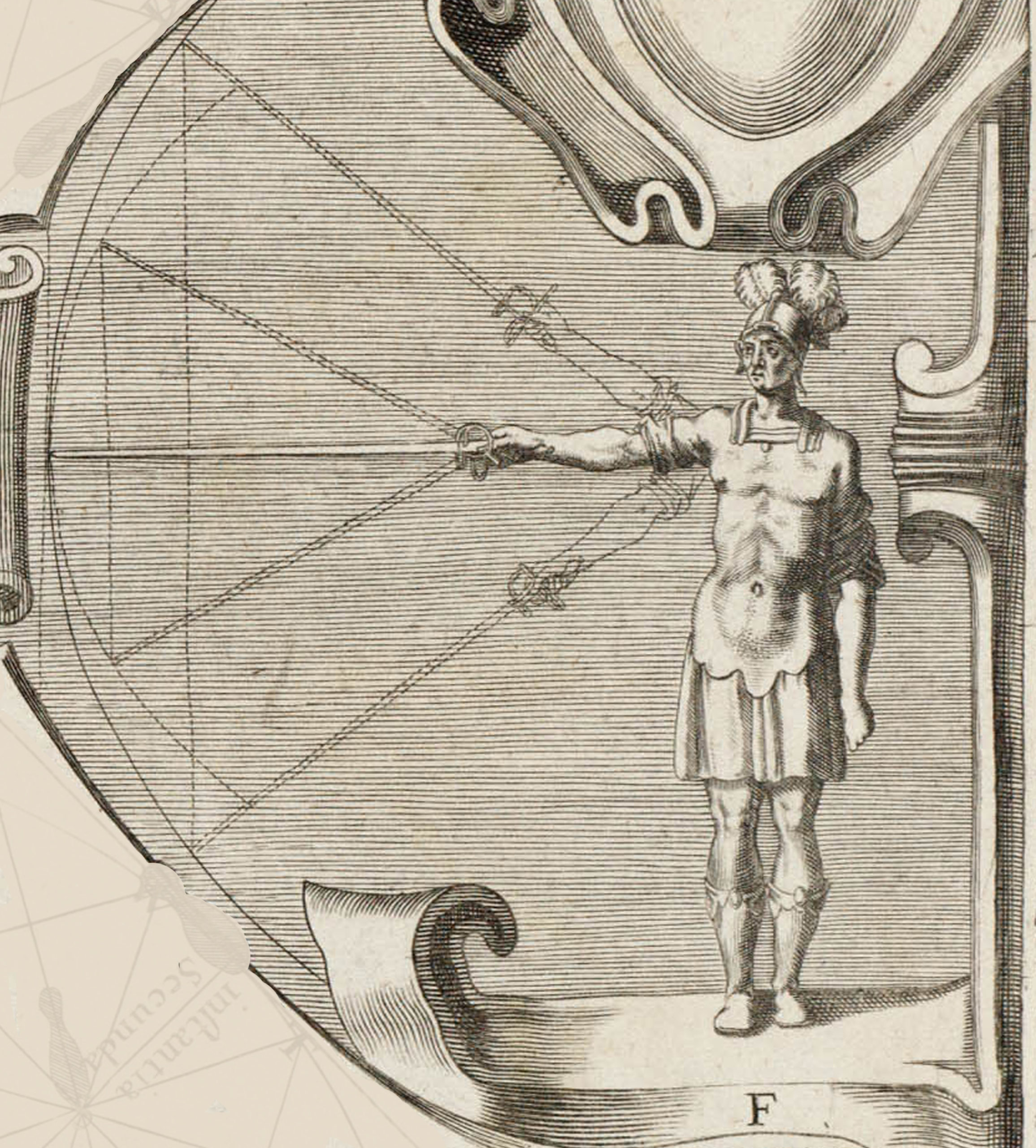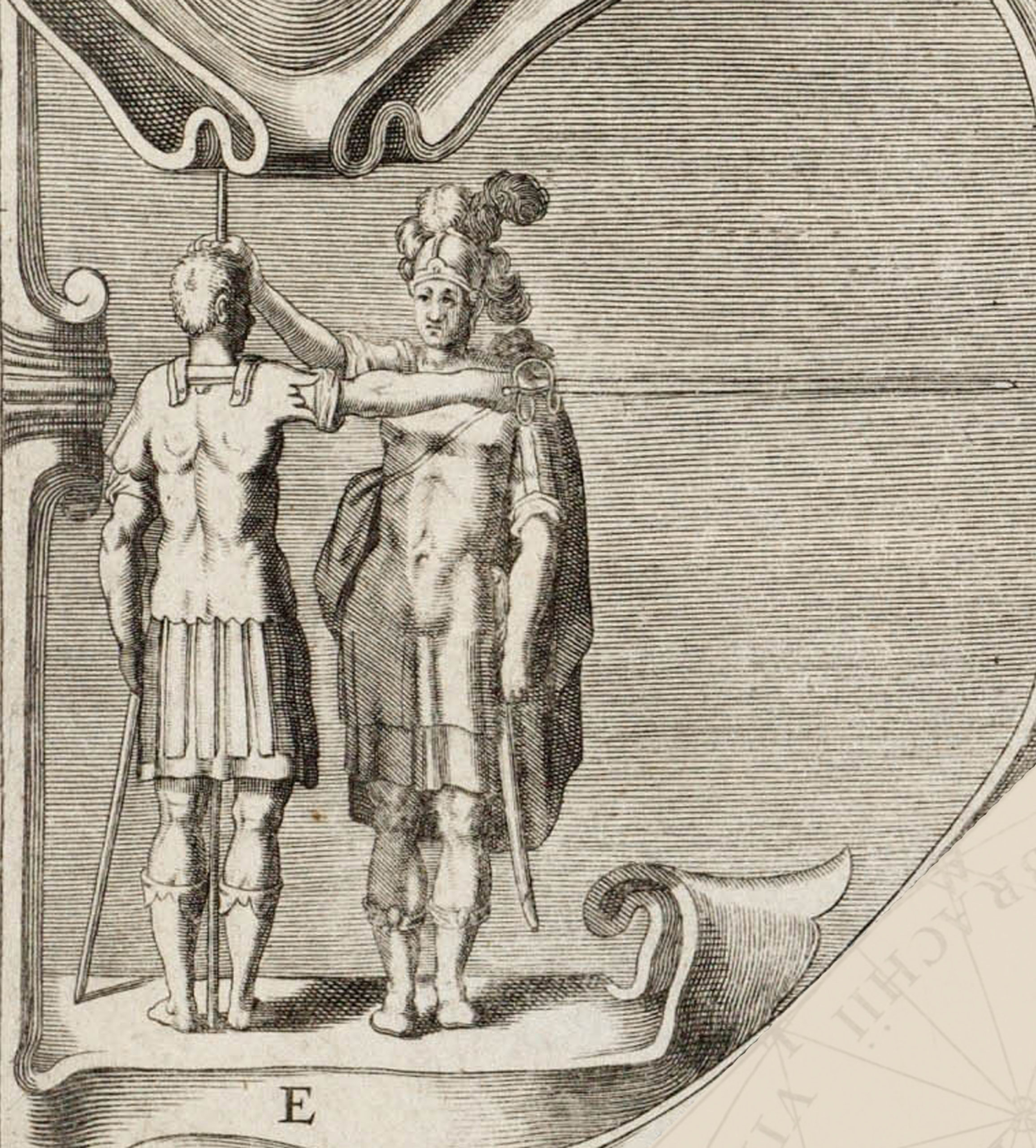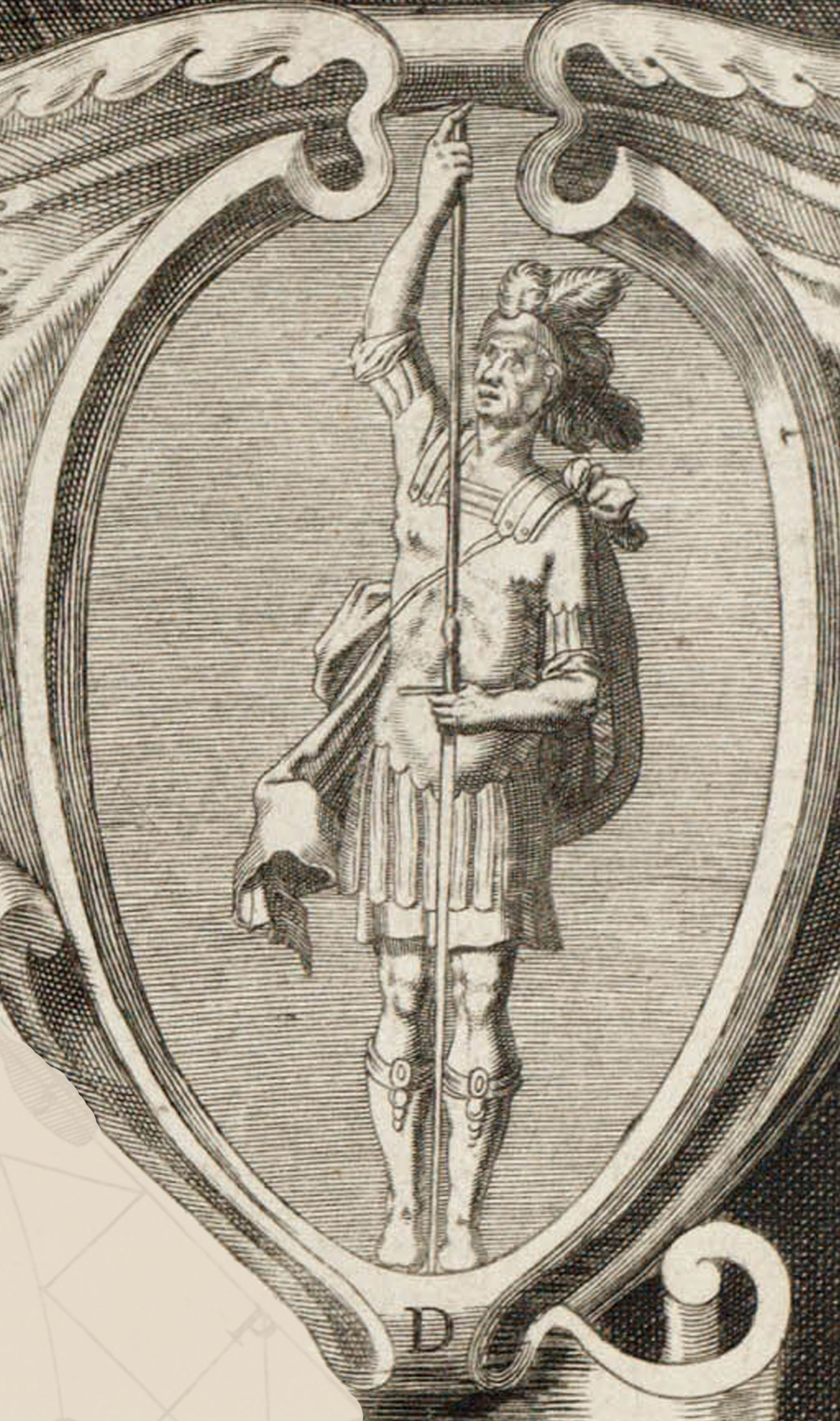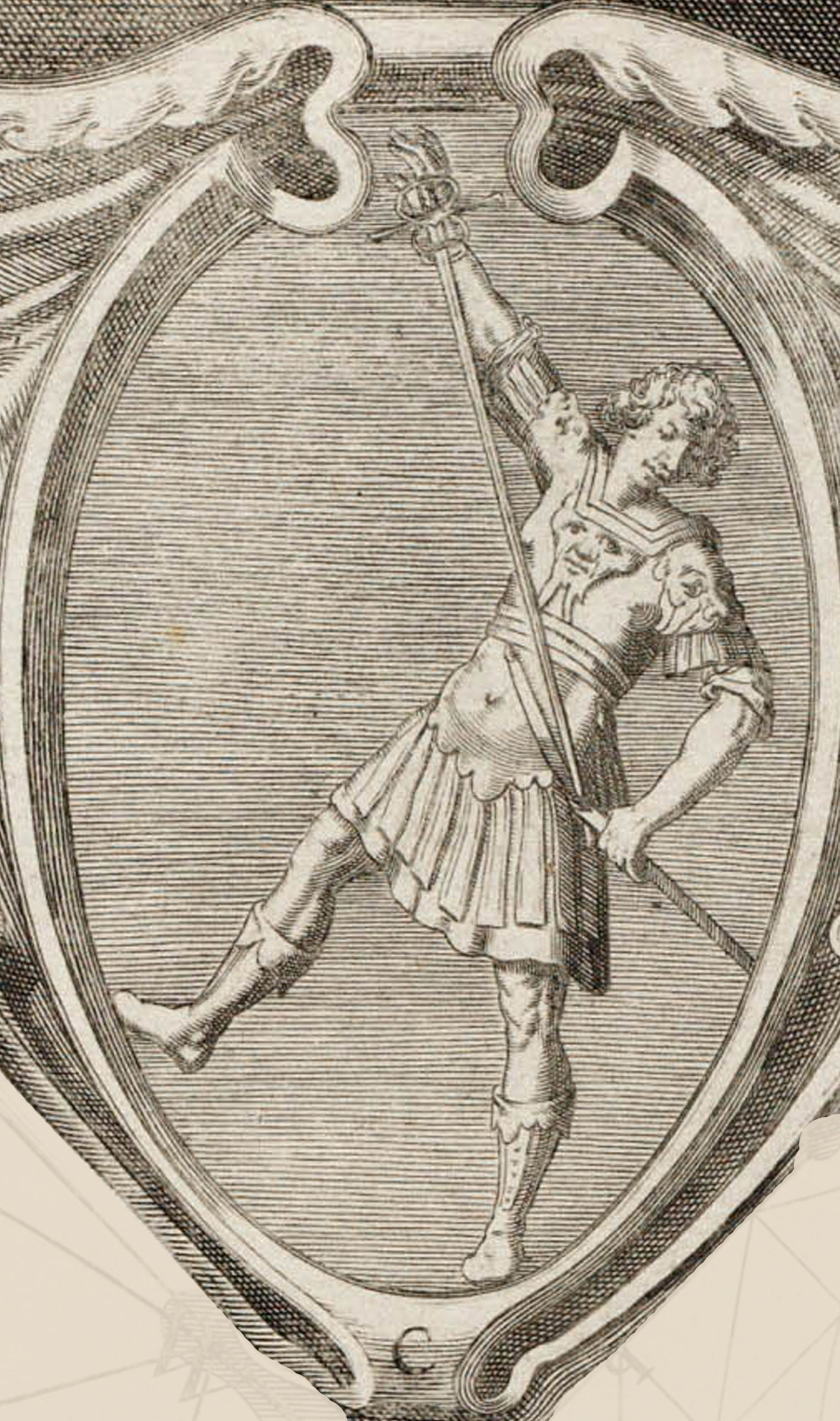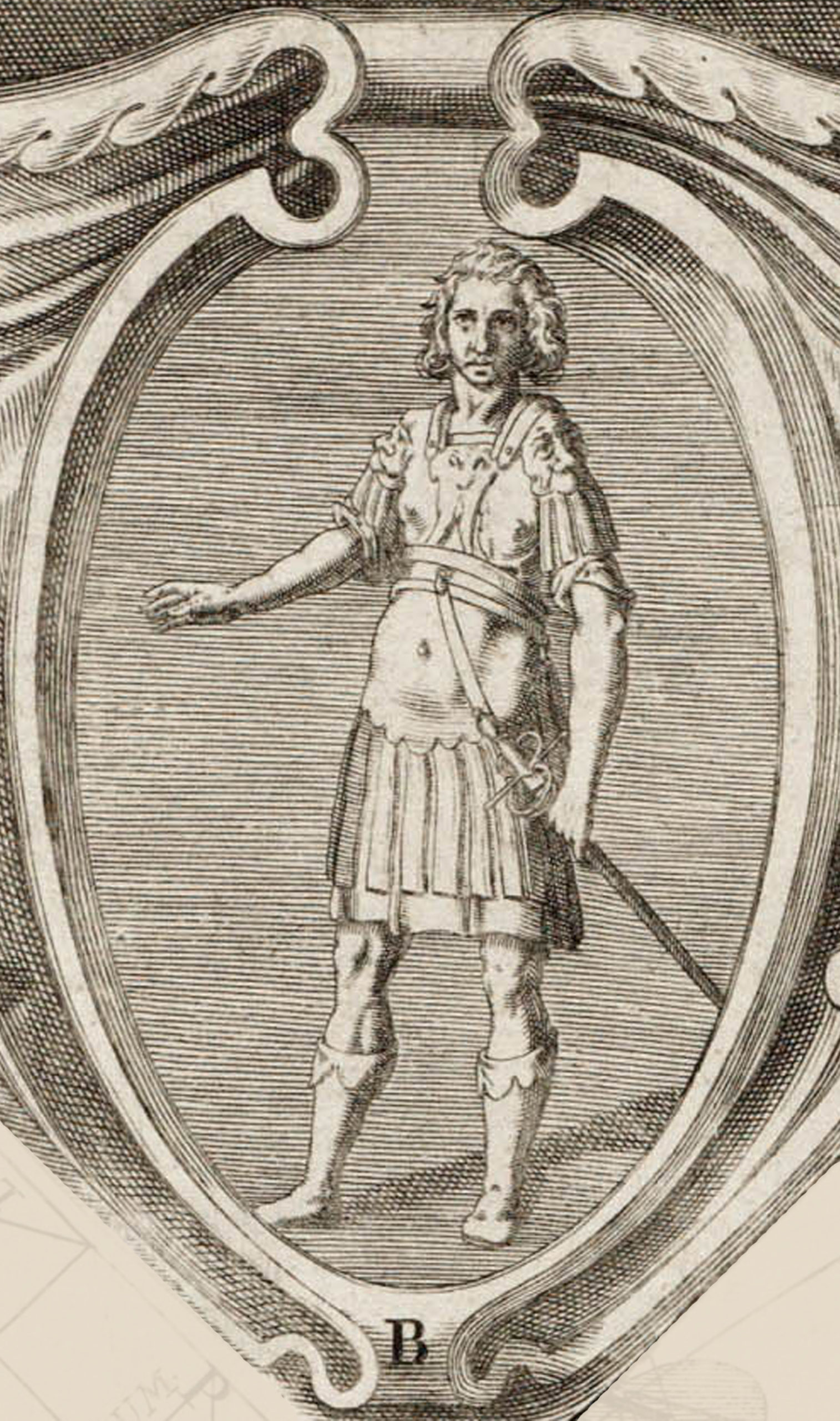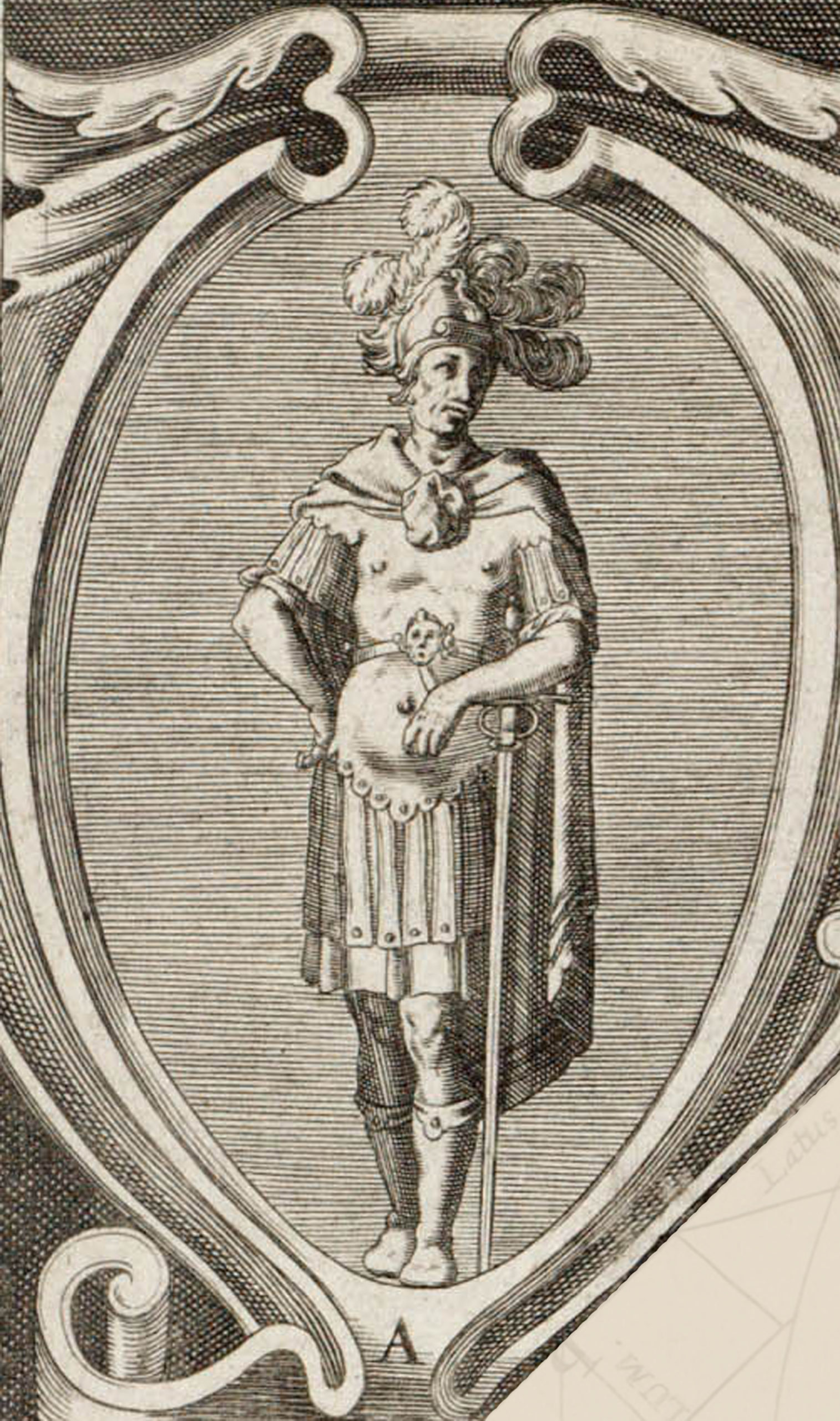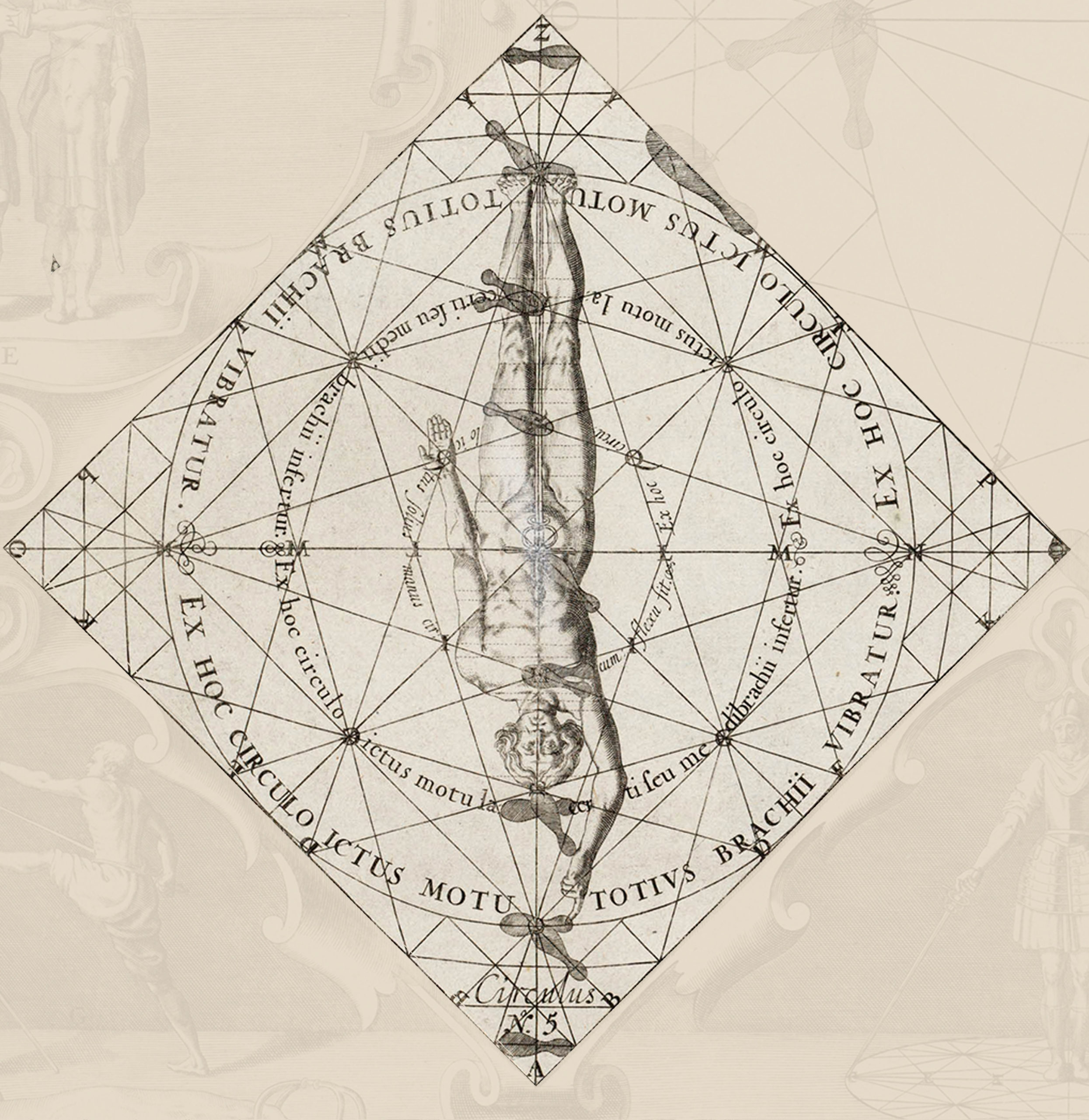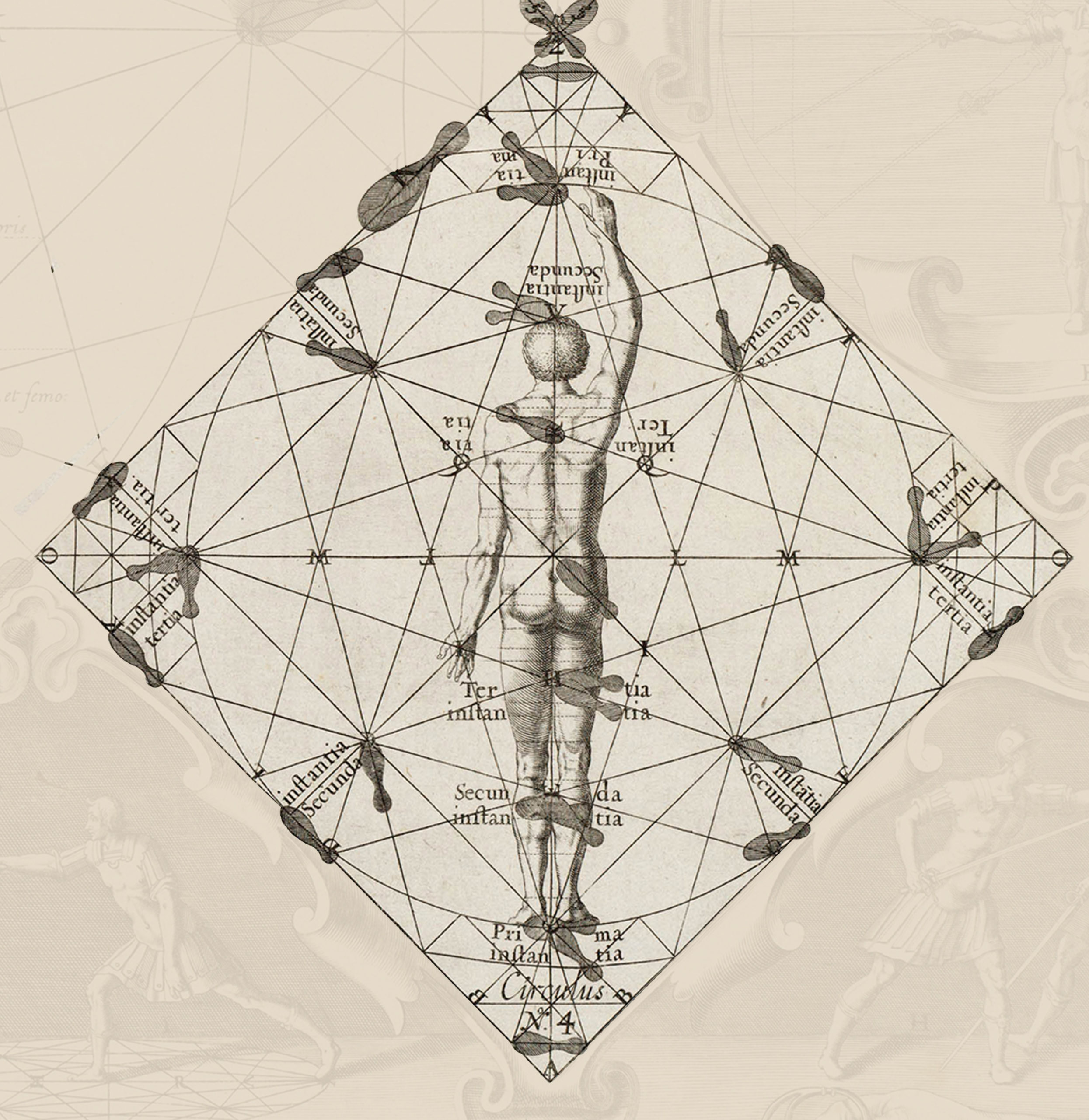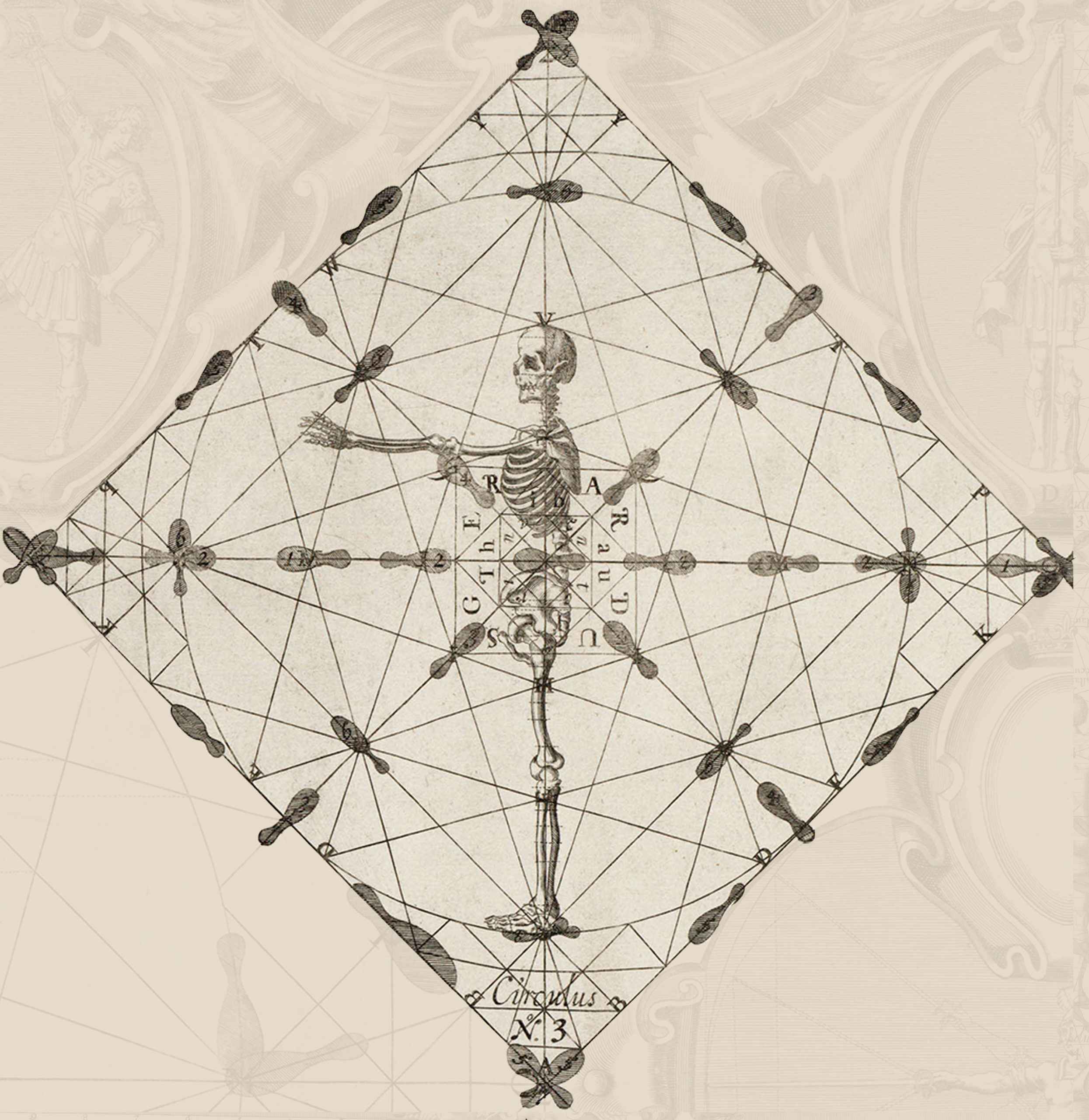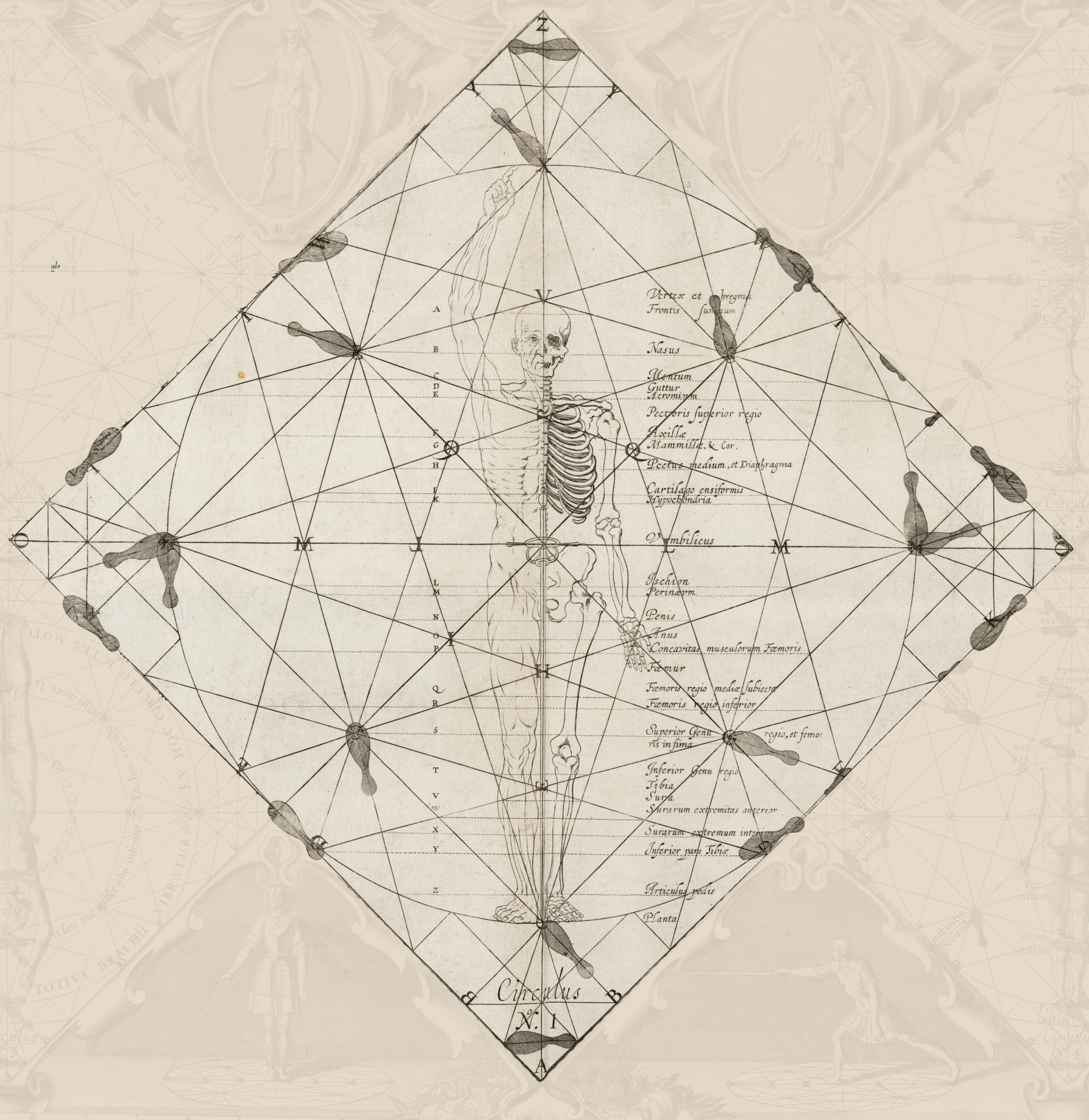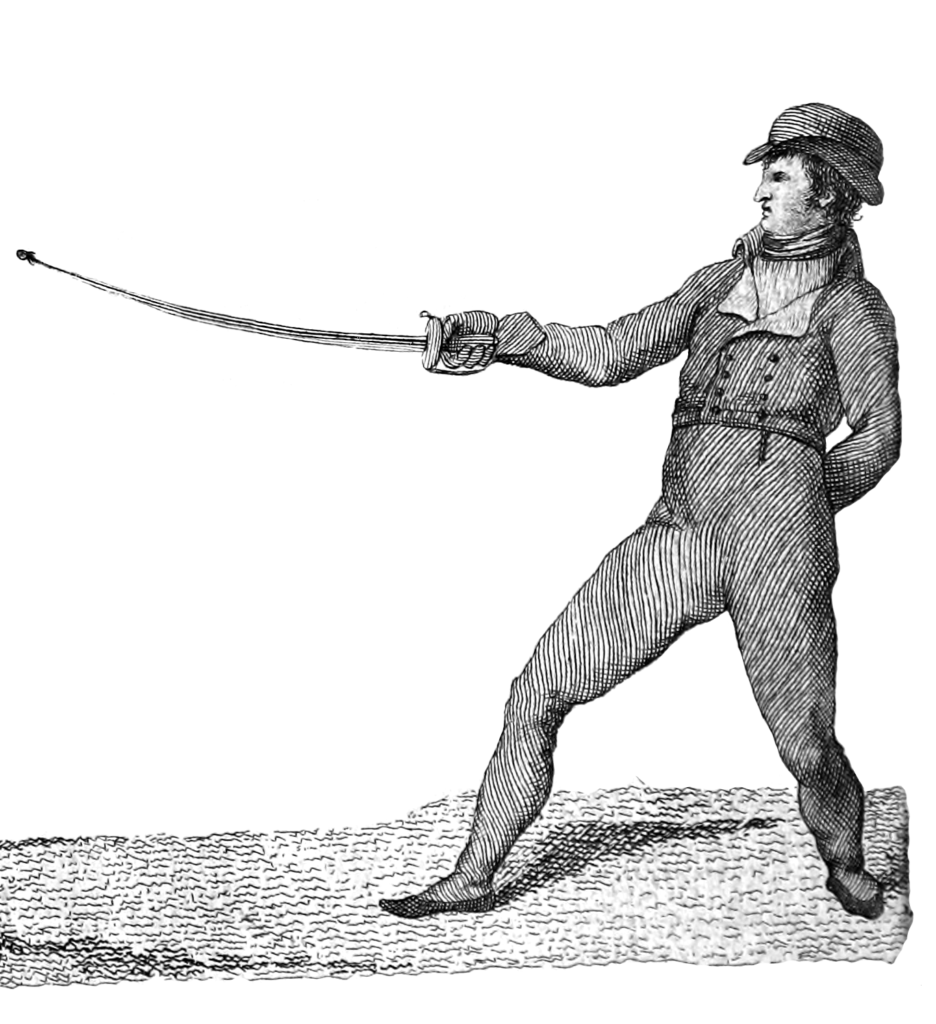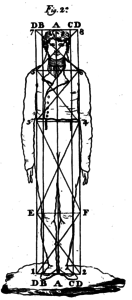Half Cut on the Parry of Fourth and its Removal
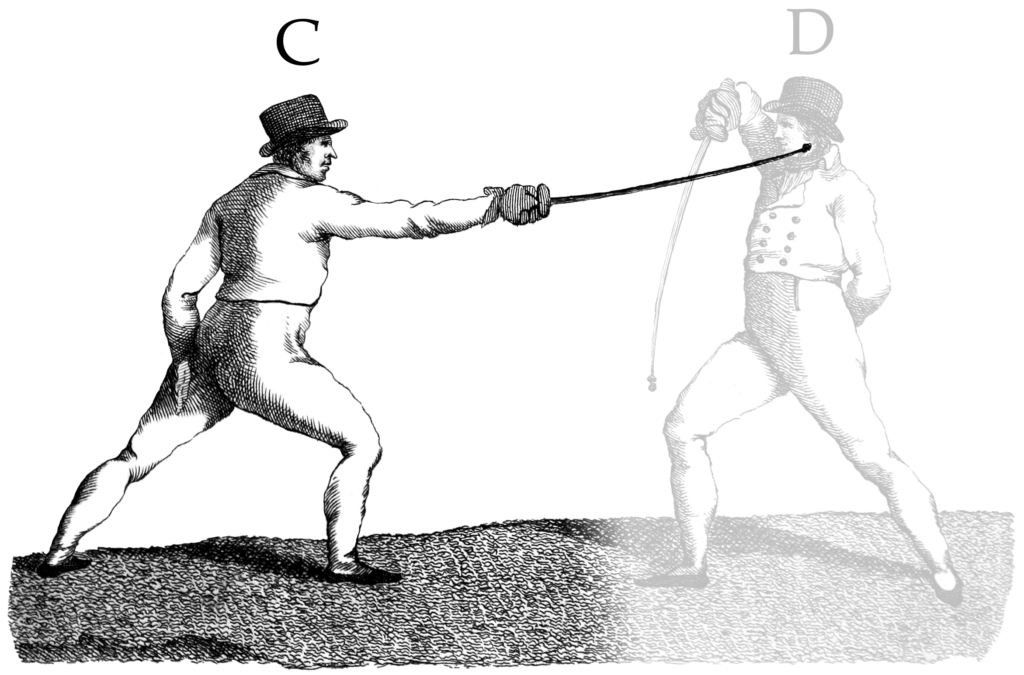
150. The contrary having repaired with fourth the thrust thrown, if the said remove is a little open, throw the sabre out very well by the point of the other, making it walk under the opposite weapon until it is very close to the right shoulder and, from here, execute a diagonal half cut to the face above the weapon and arm of the enemy. But, if the opponent, in the removal, lowers the point of his sabre as much as the shoulders or a little more, it can be horizontal and without movement from the planes (Plate 8, Figure 15, Letter C). Be that as it may, do not waste time in recovering after executing the blow.
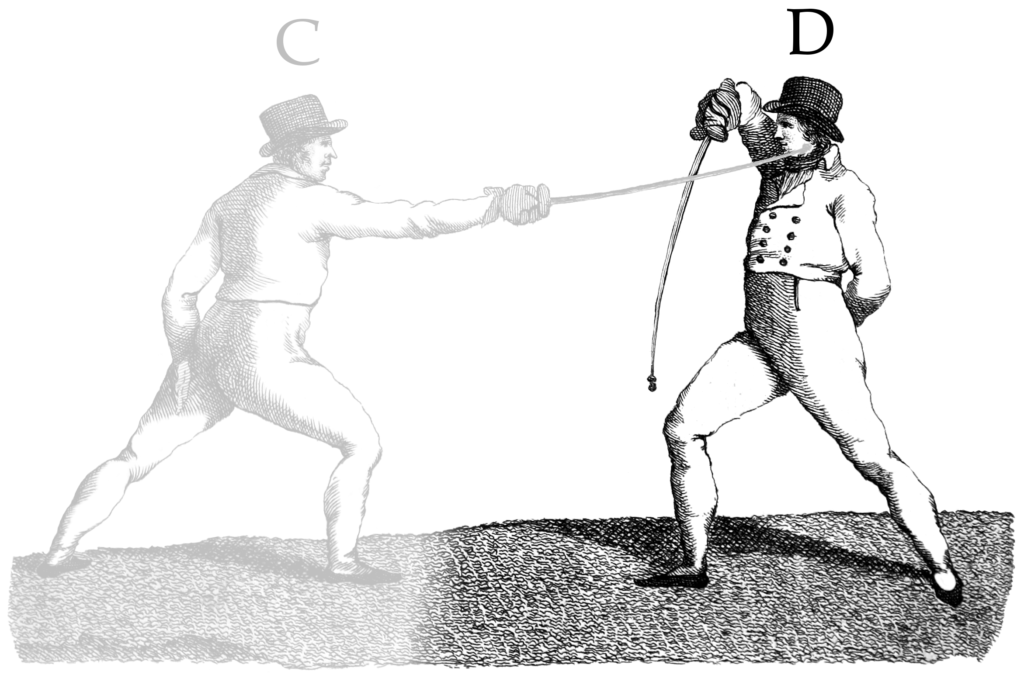
151. Consulting with safety, This blow should not be repaired with anything other than the removal of first moving to profile (Paragraph 132, Plate 8, Letter D). Because when you try to go to the removal of high fourth, either due to similarity, or because it perfectly covers the line to which the wound is directed, you may succeed in forming this parry before the enemy began the execution, in which case it would be very easy for him to direct his offense a little lower and reach the arm. If there was any delay in the formation of the said removal, the offense would arrive before and, being in this case the offending sabre, in the middle of the removal comes to the wound or body. In consequence first is considered to be the more secure removal compared to high fourth. The removal first uncovers the same points as on sixth (§ 99).
The reference to Paragraph 132, Plate 8, Letter D should almost certainly be Plate 8, Figure 15, Letter D which does, in fact, show the removal of first. Paragraph 132, interestingly enough, is where Frias introduces the parry of first. It seems likely that he had one of those all too human moments where he was thinking of two different references at the same time and ended up jotting down something of a mangled hybrid of both.
Vertical Reverse on the Parry of Fourth and its Removal
152. If the contrary repairs with regular fourth the thrust that was thrown, make your sabre walk below the other blade, bending the arm as was said in the previous shot until you have freed the point, putting the hand in the position of half fourth and, having escaped, conclude the formation of the vertical reverse, lifting the point of your sabre until it is perpendicular or parallel with the right vertical, the guard at the height of the shoulder, and the edge looking at the enemy. This must be executed from the outside of the other sabre with the arm extended. But, if the reverse is intended to be diagonal, more than was said, for the formation of the vertical and without the guard leaving the place that was explained, carry the point of the sabre past the left vertical, turn the hand to the half third position until the edge takes the direction of the right diagonal of the enemy’s face, and from this arrangement, extending the arm, direct the point to this line without varying the third position of the hand as explained. Do not omit to reinforce the opposition of the body by moving it to square, the arm and the weapon accompanied by all possible speed for the security and achievement of this wound.
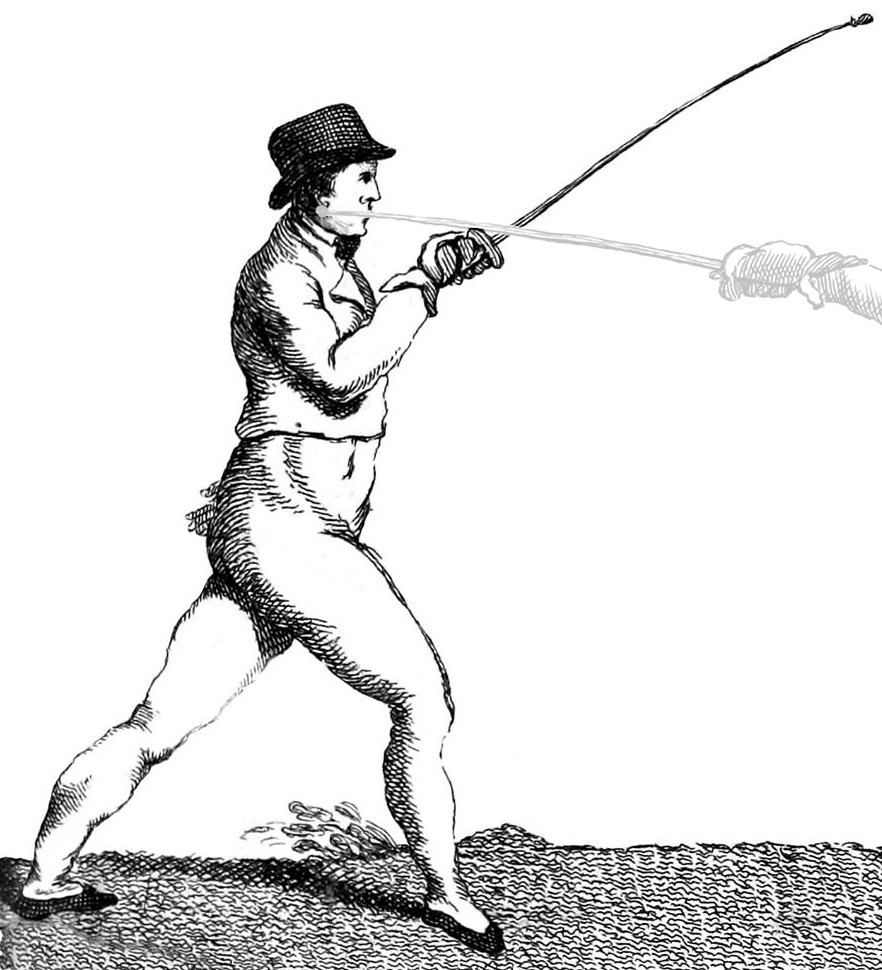
153. The points to which these wounds are directed are so little distant from one another that they do not require a different removal. To evade them, then, make the removal of high third, not omitting any of the circumstances stated in paragraph 131. The points which are uncovered in the removal are explained in paragraph 147.
Diagonal Reverse to the Side on the Parry of Fourth and its Removal
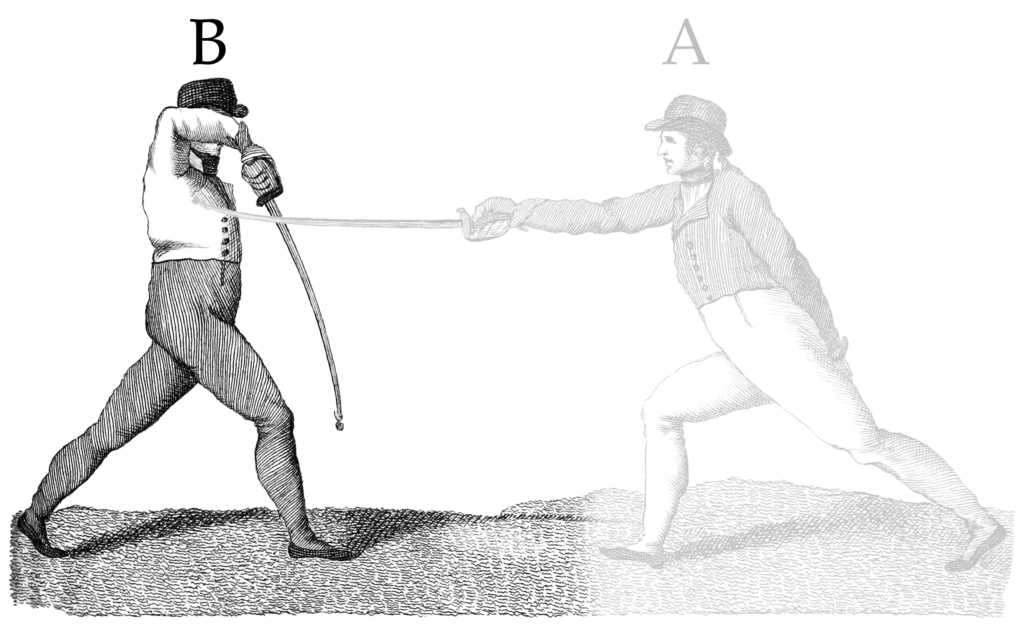
154. If the contrary has repaired with fourth the thrust thrown, execute the formation explained for the diagonal in the previous battle, a cut to the body, or thigh, or any other line of the right vertical, taking care not to forget the motion to square and the rest of the necessary oppositions (Plate 9, Figure 16, Letter A).
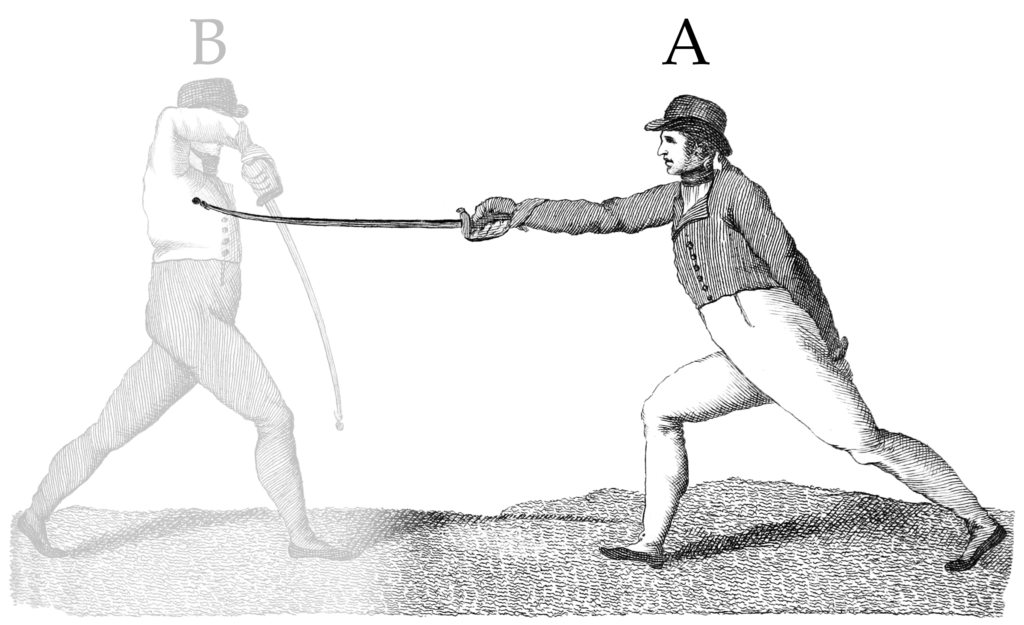
155. To remove any of these blows, make the removal of second, moving to square and doing everything prepared in the last paragraph of the chapter in this part (Plate 9, Letter B). The points which are uncovered on this removal are stated in paragraph 102.

